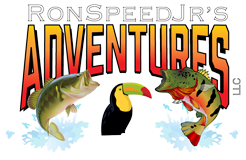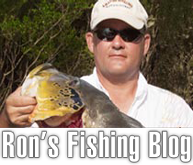 This week let’s talk about eating fish, which is one of my favorite things to do. Since I was raised in a big-time fishing family, we ate fish almost once a week and sometime 2 times a week. My uncle Jester Layfield made a living during the Great Depression whittling out his fish bait and selling them for $1 each. His baits were made from wood and the spoons were cut from a Model A tire rim.
This week let’s talk about eating fish, which is one of my favorite things to do. Since I was raised in a big-time fishing family, we ate fish almost once a week and sometime 2 times a week. My uncle Jester Layfield made a living during the Great Depression whittling out his fish bait and selling them for $1 each. His baits were made from wood and the spoons were cut from a Model A tire rim.
He tried to sell his bait to Bomber Bait Lure Company but they didn’t buy. Instead, they started making a copy of it out of plastic and called it the “Model A.” You can buy them today in any tackle shop. Well, I just got off track for a moment. Sorry!
My uncle loved eating fish so much that if he didn’t have fresh fish he would eat canned sardines, or canned salmon. Once when I was about 16 I set out a trammel net and caught a lot of carp and white buffalo. I gave them to my uncle who knew how to clean them as they are full of Y bones and you have to twist the meat from the bones. He then invited me and my cousin over to eat them. That day I thought they were excellent table fare but I was fish hungry. He fried them in hot deep grease just like we fried bass or catfish or crappie or even polies. We called the polies GEORGIA YELLOWS and depending on how fish hungry we were was how good they tasted.
We ate a lot of bass in those days as the limit was 15 per day and we had little trouble catching a limit before 10 am. There were not a huge amount of bass fishermen in those days and no tournaments. We didn’t have a boat so we fished off the bank or waded. The first boat I had was one I built myself out of 1×12 wood and string caulked it, then put black tar on the seams. It lasted 4 years. Off track again! Sorry!!
I have eaten fish almost all over the western hemisphere from Canada to Brazil with trips to Cuba, Honduras, Costa Rica and hundreds of lakes all over the USA. Here is my list of my top 10 favorite fish to eat.
1. Freshwater channel catfish that weigh 1 to 2 lb. fried whole in peanut oil 375 degrees. If you don’t have a thermometer use a wood kitchen match and when the grease is hot enough to light the match then start cooking. When the fish floats take it out and use the fork to scrape the meat off the bones. Season really good with salt and LOTS of black pepper. Eat it while it is hot.
2. Red ear bream (size of your hand) fried the same as above.
3. Freshwater yellow catfish (15 to 25 lb.) cut into very very small pieces that fry extremely fast and don’t soak up any of the oil. When they float take them out. Maybe 2 minutes and I like them crisp.
4. Freshwater walleye fried and eaten outside. These I also like fried whole but in butter and lots of pepper.
5. Saltwater snook any size and you can fix them anyway you wish as long as it is fried.
6. Peacock bass. A great eating fish in the 3 to 8 LB size. Cut into fillets and fried.
7. Salt water red snapper — this fish is good fried, baked, grilled, or sarandeado. Whole or fillets.
8. High fin blue catfish — UNDER 5LBS caught in fresh clear water cooked whole or in fillets in hot grease.
9. Crappie — scaled then fillets fried whole or in fillets. Crappie fillets without the skin won’t make my top 25 as there is not enough flavor for me. This one will meet some controversy as I know crappie are in a lot of fishermen’s top 5 to eat.
10. Northern black bullheads from clear lakes in New York, Pennsylvania, and New England states. These are one of my favorite fish to eat and really should be higher on my list but I don’t get to eat them very often. In fact it’s been 50 years since I caught my last bullhead from Watkins Pond in Bradford County Pennsylvania.
I have listed my favorite 10 fish to eat based on 60 years of fish eating and catching in many countries and many lakes, ponds streams and the ocean. I left out all the trout from freshwater streams, flounder, red fish, Northern yellow perch, halibut, salmon and scores of others.
The secret for good fried fish is well-seasoned with salt & LOTS of pepper, hot peanut oil (375 degrees) and breaded with Aunt Jemima yellow corn meal.
Truth is my favorite fish is the one I have in the refrigerator! If you don’t have a good fish to eat tonight you can always open a can of sardines, hit it with a couple licks of Tabasco, and open a box of premium saltines along with a cool one and you might be surprised. Ha!
Good luck on your fish eating.
Better yet, let us SHOW you how it’s done with fresh-caught bass in Mexico or Brazil!
 This week let’s talk about summer patterns for bass. Today is the 18th of June and most bass have moved from the shallows and creek channels into deeper water. This is one of my favorite times to fish as the bass school up and when you find them you can usually catch several in one place.
This week let’s talk about summer patterns for bass. Today is the 18th of June and most bass have moved from the shallows and creek channels into deeper water. This is one of my favorite times to fish as the bass school up and when you find them you can usually catch several in one place.

